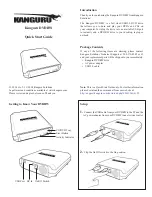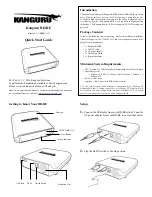
SoftPLC
CFW300 | 18-3
18
18.2.1 Start-Up
See below the required steps to put the PID controller application into operation.
NOTE!
For the PID controller application to work properly, it essential to check if the CFW300 is configured
properly to drive the motor at the desired speed. In order to do so, check the following settings:
Acceleration and deceleration ramps (P100 to P101).
Current limit (P135) for V/f and VVW control modes.
Torque boost (P136 and P137) and slip compensation (P138) if in the V/f control mode.
Configuring the PID Controller Application
The PID controller application will be configured according to the example shown below, where:
The CFW300 frequency inverter will be configured to operate in the local mode.
Digital input DI1 will be used for the Run/Stop command in local mode.
Digital input DI2 will be used to select the PID to Manual/Automatic.
The PID controller process variable (PV) will be connected to analog input AI1 in the scale of 4-20 mA, where
4mA is equal to 0 bar and 20 mA is equal to 4.0 bar.
The PID controller control setpoint (SP) will be via HMI (keys).
Fuses
DI2 - Manual / automatic PID
4-20 mA
0-4 bar
Pressure
Transducer
Isolating switch
PE
PE
PE U V W
L1
1
DI1
DI2
DI3
CFW300
Setpoint via
keys
Shield
Process
DI4
GND
AI1
GND
AI1
+10 V
DO1 -RL-NF
DO1 -RL-C
DO1 -RL-NA
2
3
4
5
6
7
8
9
10
11
12
L2
W V U PE
L3
Line
L1/L
L2/N
L1/L
DI1 - Start / stop
Figure 18.2:
Example of the PID controller application on the CFW300
Summary of Contents for CFW300 V1.3X
Page 2: ......
Page 8: ...Contents...
Page 46: ...Identification of the Inverter Model and Accessories 6 4 CFW300 6...
Page 60: ...Logical Command and Speed Reference 7 14 CFW300 7...
Page 72: ...V f Scalar Control 9 10 CFW300 9...
Page 80: ...VVW Vector Control 10 8 CFW300 10...
Page 116: ...Digital and Analog Inputs and Outputs 12 24 CFW300 12...
Page 132: ...Reading Parameters 15 6 CFW300 15...
















































